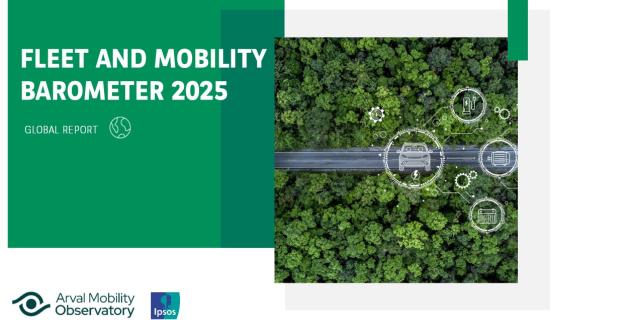Paris, 30th of August 2022
Electrification of the global fleet is rapidly expanding, with worldwide demand for electric vehicles growing sixfold from 2021 to 2030, according to projections by McKinsey. What about Europe? In 2018, Internal Combustion Engine (ICE) vehicles accounted for 95 % of all passenger car registrations. In 4 years, the landscape has changed and has benefited to electrified vehicles, the present consisting of broad mix of powertrains: when it comes to passenger cars, Battery electric vehicles (BEV) accounted for 9,1% of the sales in 2021 in Europe, Plug in Hybrid Vehicles (PHEV) for 8,9%, Hybrid Electric Vehicles (HEV) for 19,6%. PHEV registrations increased by 70.7% in 2021 compared to 2020. BEV posted similar growth (+63.1%) throughout 2021 and registrations of hybrid electric cars increased by 60.5%, marking the first time that HEV sales overtook those of diesel in the European Union (source ACEA).
These are the results of different parameters:Governments have changed their tax incentives to increasingly favor more sustainable technologies, low Emission Zones (LEZ) are being introduced, whilst electric charging infrastructure is growing. At a time where there is growing public and political pressure to tackle the causes of climate change and air pollution, together with the increasing number of electrified models available, means that fleet decisions around powertrains have gone beyond functionality, performance and costs to include emissions and compliance criteria to ensure a future proof car mobility.
On 14 July 2021, the European Commission adopted a series of legislative proposals setting out how it intends to achieve climate neutrality in the EU by 2050 including the intermediate target of an at least 55% net reduction in greenhouse gas emissions by 2030. The targets based on the WLTP test procedure were defined as below: for the period 2020-2024, 95 g CO2/km for the cars, 15% reduction from 2025 (81 g CO2/km) on and 37.5% reduction from 2030 on (59 g CO2/km). In July 2021, the European Commission proposed to reduce the limit for emissions from cars and vans by a further 15% from 2025; followed by a 55% reduction for cars and 50% for vans by 2030 and to reach zero emissions by 2035. The Parliament adopted its position during the 1st of June 2022 plenary session, and the Council adopted its general approach on 29 June 2022. The sale of new ICE vehicles in Europe, including hybrid cars will be prohibited from 2035 in Europe. Sales of new zero emission vehicles only will be allowed.
On top of that, from 2025, the WLTP- test CO2 emissions figures of PHEV could increase significantly. The official WLTP type-approval procedure assumes the share of driving in the mostly, but not fully, electric charge-depleting mode at around 70%–85%. According to ICCT research the average real-world electric driving share is about 45%–49% for private cars and about 11%–15% for company cars. As a consequence, the real-world fuel consumption of PHEVs in Europe is on average three to five times higher than WLTP type-approval values. The ICCT study presents how the WLTP type-approval assumption on the share of driving in charge-depleting mode (Utility Factor) can be adjusted to better reflect average real-world usage of PHEVs.
As a result, the European Commission has published an amendment to its regulation for the type approval procedure for the CO2 emissions of light passenger vehicles. From 2025, the EU will significantly reduce the so-called utility factors, which is the share of electric driving that regulators use for calculating CO2 emissions of PHEVs. From 2027, the utility factors of plug-in hybrids will be fully aligned with how they are driven in the real world. The Commission’s draft also includes a review of the proposed utility factors in 2024 and 2026 based on data collected from on-board fuel consumption meters.
In order to monitor the real fuel consumption, fleet managers should use telematics tools. According to these data, they could fine-tune the rules defined in their company car policy regarding the usage of fuel cards (implementing updated cap for example) or even recommend a BEV depending on the usage of the car.
The second part of the article aims to bring clarity on what could be the impact (non-exhaustive list) of this new calculation methodology on European countries regarding the current tax/fiscal measures.
Austria:
- the highest Benefit In Kind (BIK) would have to be paid
- subsidies would be removed
- road tax at first registration to be paid
- the engine tax would rise
Belgium:
- the driver BIK will increase
- the employer social contribution will increase
- employer disallowed car expenses will increase
- impact on the car’s “Ecoscore’
Denmark:
- the BIK will increase
- the registration tax will increase
- road tax will increase
Finland:
- the BIK value (tax per month) for the company car user would be higher
- car tax would be higher
- the options of the car would be more expensive
- the annual vehicle tax would be higher
Germany:
- the subsidy for plug in hybrids will be discounted from the german government up to 31.12.2022.
- The vehicle taxation will increase.
- The assessment basis for the taxation of Plug-in Hybrid will also no longer be only 0,5% for the drivers.
Italy:
- Plug-in vehicles would be excluded from government incentive schemes (2022: up to € 4,000 bonus for new vehicle purchased by individuals)
- The yearly regional car tax, for which there is now a total or partial exemption (depending on the region) of payment for electric and Hybrid vehicles will be paid
Netherlands:
- the BMP Tax would increase
Spain:
- the registration tax will increase.
- PHEV would lose their “zero emissions” sticker
Switzerland:
- for road taxes there will be a significant impact in those Cantons (26 different approaches in Switzerland) where CO2-emission is taken into account for the yearly road tax costs
- vehicles moving from one to the other energy label category due to this change will generate higher costs
United Kingdom:
- the driver will pay more BIK
- the Road Fund License is likely to increase as the rate relies directly on the CO2 banding of the vehicle, specifically the first year tax
Due to the different crisis (Covid-19, semiconductor shortage, Ukrainian war) and their consequences on the automotive industry (longer car delivery delay, energy price increase, car price increase) will the European Commission agenda be respected?













